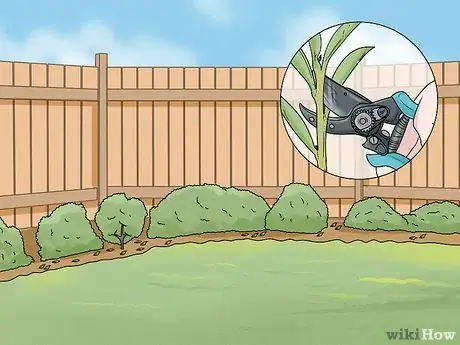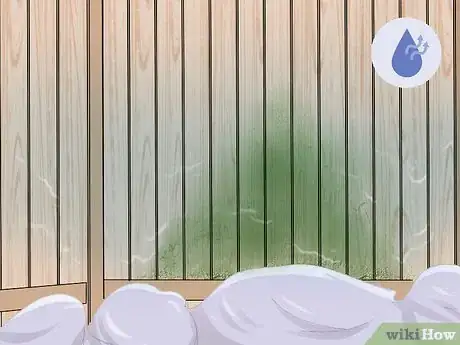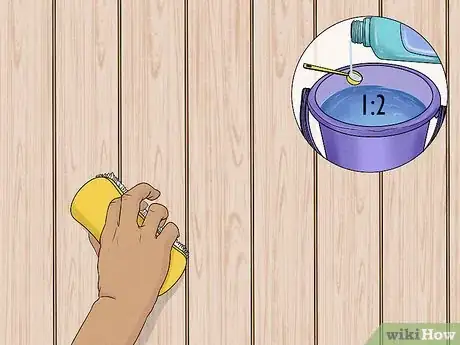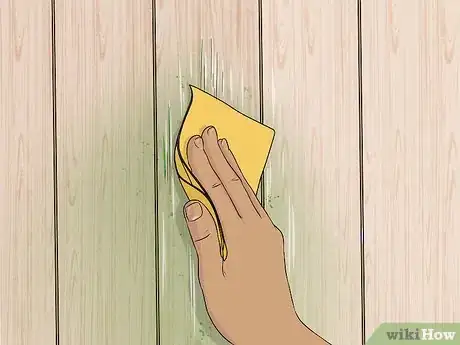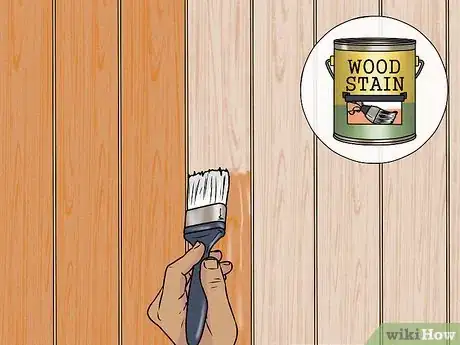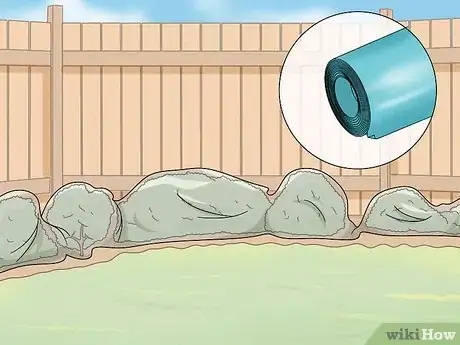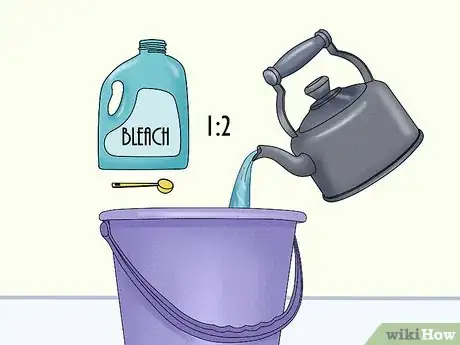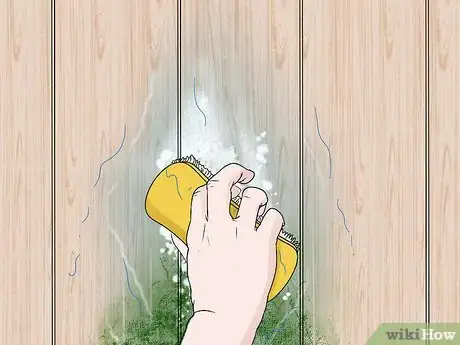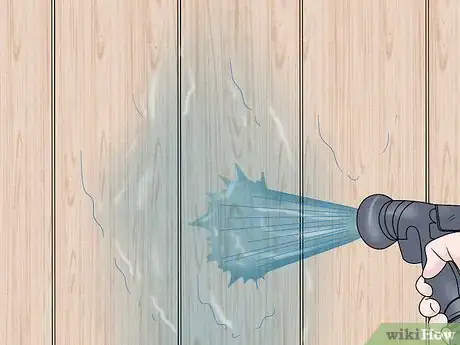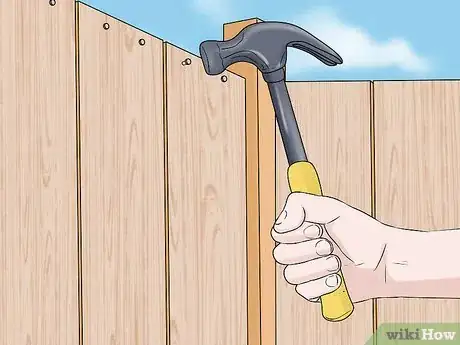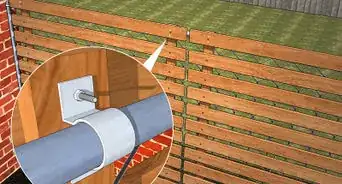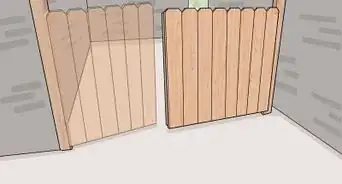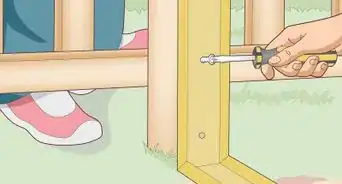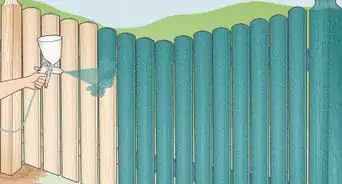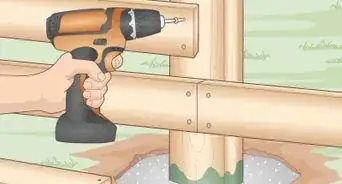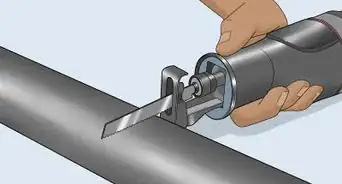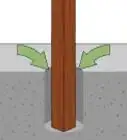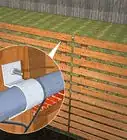This article was co-authored by Andres Matheu. Andres Matheu is the Owner of Hömm Certified Painting Systems, an Interior and Exterior Residential painting business based in the Washington, DC Metro area. Andres specializes in interior and exterior residential painting, color consultations, cabinet refinishing, wallpaper removal, and epoxy flooring among other services. An EPA Lead-safe Certified Firm, Hömm Certified Painting Systems has been awarded the Best of Houzz 2019 Service, Angie's List Super Service Award 2019, and Northern Virginia Magazine's 2018 Best Home Experts (painters) award.
wikiHow marks an article as reader-approved once it receives enough positive feedback. In this case, several readers have written to tell us that this article was helpful to them, earning it our reader-approved status.
This article has been viewed 354,182 times.
Over time, wooden fences can get covered in algae and mildew. The growth generally occurs in shaded, moist locations. There are several ways you can clean the algae and mildew off a fence so that it looks better.
Steps
Using a Power Washer to Remove Mildew and Algae from Wood Fencing
-
1Trim and tie back plants.
-
2Cover tender plants with a tarp or invert buckets over them. Remove any other obstructions.Advertisement
-
3Set the power washer on a lower pressure setting such as 1500 to 2000 psi.[1]
-
4Stand about 2 feet (0.6 m) away from the fence and hose it down. You can move closer in for heavily stained spots but don’t keep high pressure on any spot for too long. Move the sprayer in a slow, sweeping pattern.
-
5Let the fence dry if the mildew and algae disappear from the fence. If stains remain proceed to the next step.
-
6Scrub the stained areas on the fence if some stains remain after power washing.[2]
- Pour a solution of one part household bleach to two parts water into a bucket. There is no need to stir.
- Use a scrub brush to clean the remaining stains with the solution. Be careful not to get bleach solution on your plants.
- Repeat the power washing on the stained areas you scrubbed.
-
7Check the fence and sand any rough areas.
-
8Sink any protruding nails or screws and repair any damaged wood.
-
9Apply wood preservative, stain or paint to the fence after it dries prevent future algae and mildew growth.[3]
Hand Scrubbing to Remove Mildew and Algae from Wood Fences
-
1Cover plants with tarps or inverted buckets.
-
2Mix a solution of one part household bleach to two parts warm water in a bucket.
-
3Add a teaspoon of a mild soap that is safe to mix with chlorine bleach to each gallon or liter of water in your bucket.
-
4Scrub the stained areas of the fence with a scrub brush, being careful not to get the solution on plants.[4]
-
5Rinse the fence with clean water. You could do this with a garden hose.
-
6Let the fence dry.
-
7Repair any damaged areas, sink protruding screws or nails, and sand rough areas.[5]
-
8Consider painting the fence with a paint that has an algae and mildew preventative in its formula.[6]
Community Q&A
-
QuestionShould I use a bleach solution or buy an algae remover?
 Community AnswerIt depends. Too strong a solution or too hard a brush could streak the paint and wood. You could try using a pressure washer.
Community AnswerIt depends. Too strong a solution or too hard a brush could streak the paint and wood. You could try using a pressure washer. -
QuestionCould I use a bleach solution to clean a stained cedar fence?
 Community AnswerYes, provided it is a mild solution of, say, one part bleach to five parts water. Mold and Algae will absorb the bleach with the water and should die off within three to five days. Eye and skin protection are essential, and wash your hands and any other points of skin contact immediately afterward.
Community AnswerYes, provided it is a mild solution of, say, one part bleach to five parts water. Mold and Algae will absorb the bleach with the water and should die off within three to five days. Eye and skin protection are essential, and wash your hands and any other points of skin contact immediately afterward. -
QuestionIs there any spray I can use on a wooden fence to treat it for algae?
 June HigginsCommunity AnswerSpraying ‘Elbow Grease’ is quite effective for removing green algae from a wooden fence.
June HigginsCommunity AnswerSpraying ‘Elbow Grease’ is quite effective for removing green algae from a wooden fence.
Warnings
- Don’t set the pressure on a pressure washer too high or it will damage the fence.⧼thumbs_response⧽
- Very old, rotting fences cannot be power washed without ruining the fence. You may have to replace older sections of fence that are badly mildewed or algae covered.⧼thumbs_response⧽
- Don’t let the pressurized water stream hit plants; even the trunks of large trees could be damaged.⧼thumbs_response⧽
- Keep children and pets away from the fence while you power wash it.⧼thumbs_response⧽
Things you’ll need
- Power washer
- Scrub brush
- Buckets or tarps to cover plants
- Household bleach
- Mild soap that’s safe to use with bleach
- Tools to repair fence if needed, hammer, screwdriver, etc.
- Sandpaper
- Paint, stain or wood preservative
References
- ↑ https://www.todayshomeowner.com/video/how-to-clean-your-home-with-a-pressure-washer/
- ↑ https://www.todayshomeowner.com/video/how-to-clean-and-maintain-a-wood-fence/
- ↑ https://www.familyhandyman.com/garden-structures/fences/how-to-renew-wooden-fences/
- ↑ https://www.longfence.com/content/how-to-clean-a-wood-fence-without-a-powerwasher-in-three-easy-steps
- ↑ https://www.longfence.com/content/how-to-clean-a-wood-fence-without-a-powerwasher-in-three-easy-steps
- ↑ https://www.longfence.com/content/how-to-clean-a-wood-fence-without-a-powerwasher-in-three-easy-steps
- https://www.todayshomeowner.com/video/preventing-mold-and-mildew-on-the-outside-of-a-house/
- https://www.consumerreports.org/pressure-washers/surfaces-safe-to-clean-with-a-pressure-washer/
About This Article
If you want to remove mildew and algae from a wooden fence using bleach, start by covering the plants with tarps or inverted buckets so they aren’t harmed by the solution. Then, mix 1 part bleach with 2 parts warm water. Next, add 1 teaspoon of mild soap per gallon of water, if it is safe to mix with bleach. Scrub that solution onto the stained areas of the fence and rinse it off with a hose. Keep reading to learn how to prevent future algae or mildew growth!
